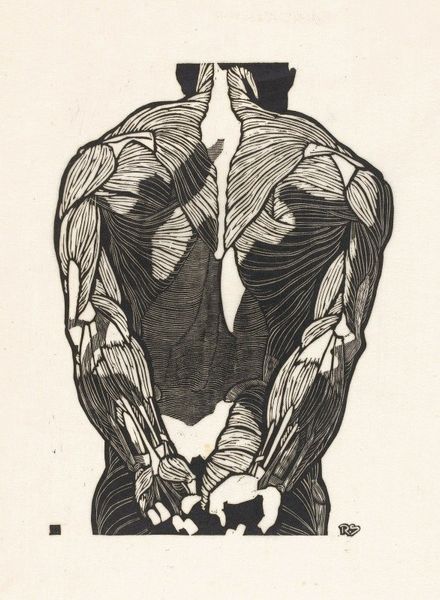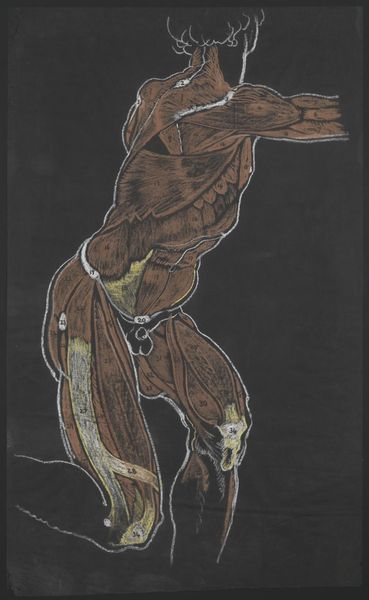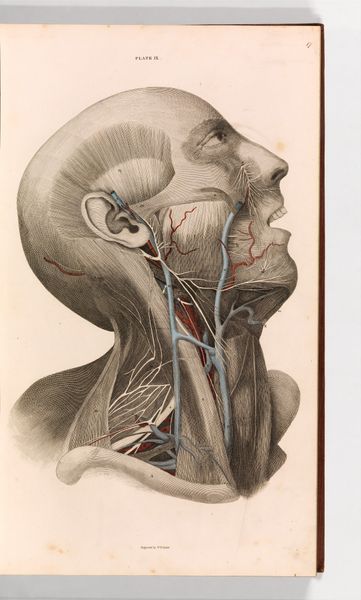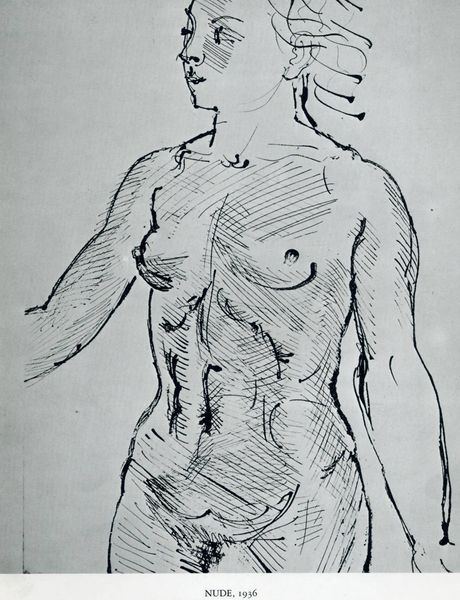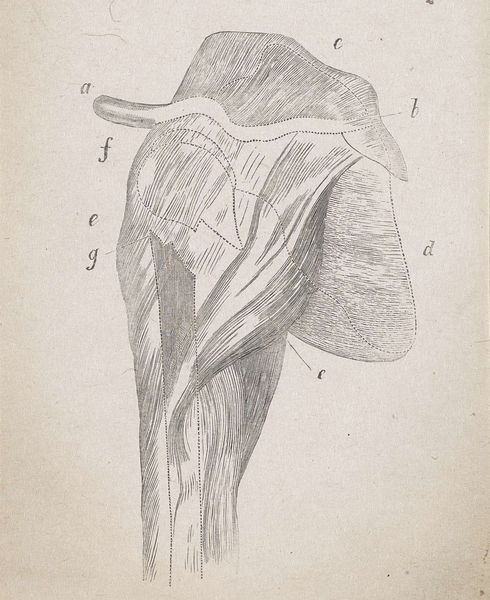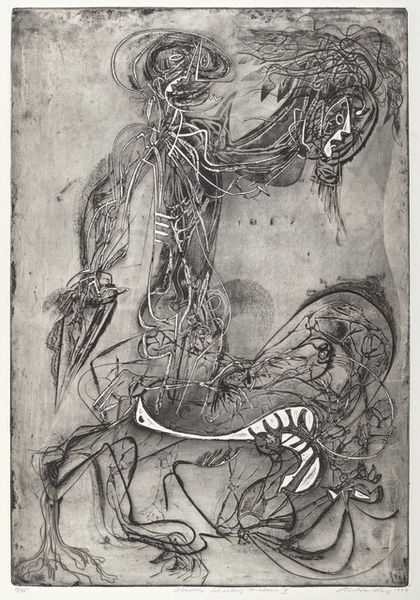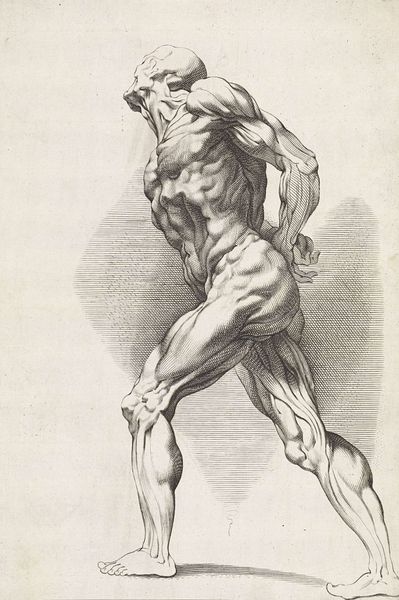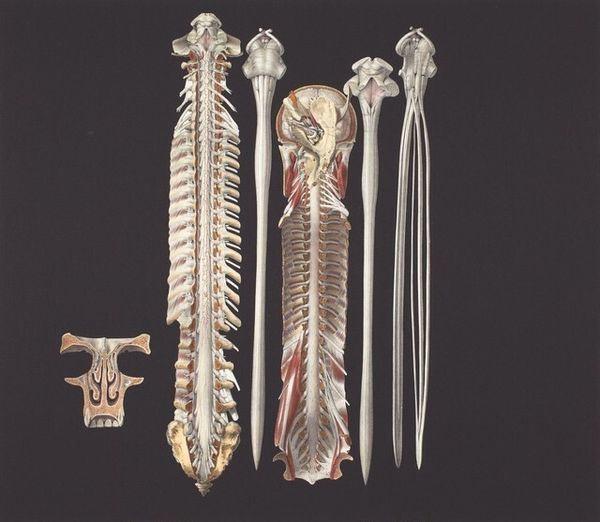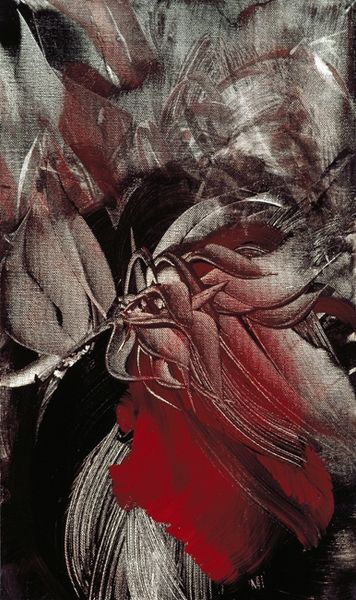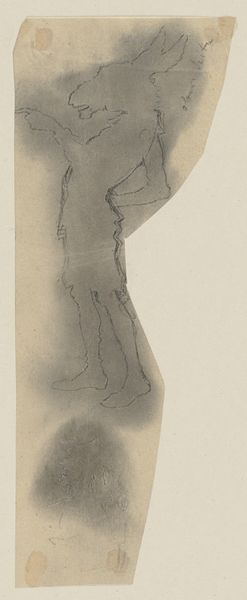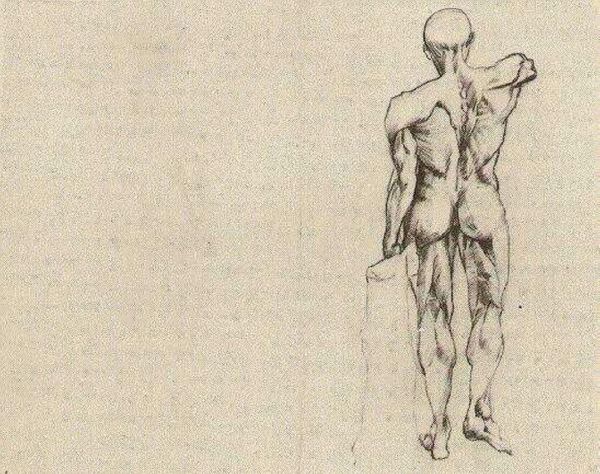
Dimensions: support: 1120 x 803 mm
Copyright: CC-BY-NC-ND 4.0 DEED, Photo: Tate
Editor: This is Sir William Orpen's "Anatomical Study, Male Torso" from around the turn of the century, held at the Tate. The rendering of musculature using chalk on a dark ground is captivating! What materials were available at his time, and how did they inform his artistic choices? Curator: The availability and affordability of materials heavily influenced art production. Orpen's choice of chalk, readily accessible and relatively inexpensive, suggests a focus on practicality. Consider how this diverges from, say, oil paints. Did this accessibility allow him freedom to experiment and explore anatomy in a more immediate way? Editor: That is a great point. The immediacy speaks to the labour and process, a kind of social context in itself, right? Curator: Exactly! Understanding those production constraints allows for a deeper appreciation. Editor: I'll remember to consider the materials and their role in reflecting artistic intention.
Comments
tate 6 months ago
⋮
http://www.tate.org.uk/art/artworks/orpen-anatomical-study-male-torso-t13365
Join the conversation
Join millions of artists and users on Artera today and experience the ultimate creative platform.
tate 6 months ago
⋮
This drawing was used by William Orpen to teach anatomy to his students at the Metropolitan School of Art in Dublin, where he taught from 1902 until the outbreak of the First World War in 1914. It is one of twenty large-scale anatomical drawings by Orpen in the Tate collection. The delineation of the body’s structure in red and white chalk on black paper allowed it to be visible to students when pinned up on the blackboard during teaching. Each of the drawings from this group depict the structure of the human body, its bones, the muscles that stretch over them, and the way that its limbs move. Orpen had studied life drawing at the Slade School of Art, London, under the former surgeon Henry Tonks, and this training had convinced him of the importance of understanding the underlying anatomical structure of the figure as well as its outward appearance.
